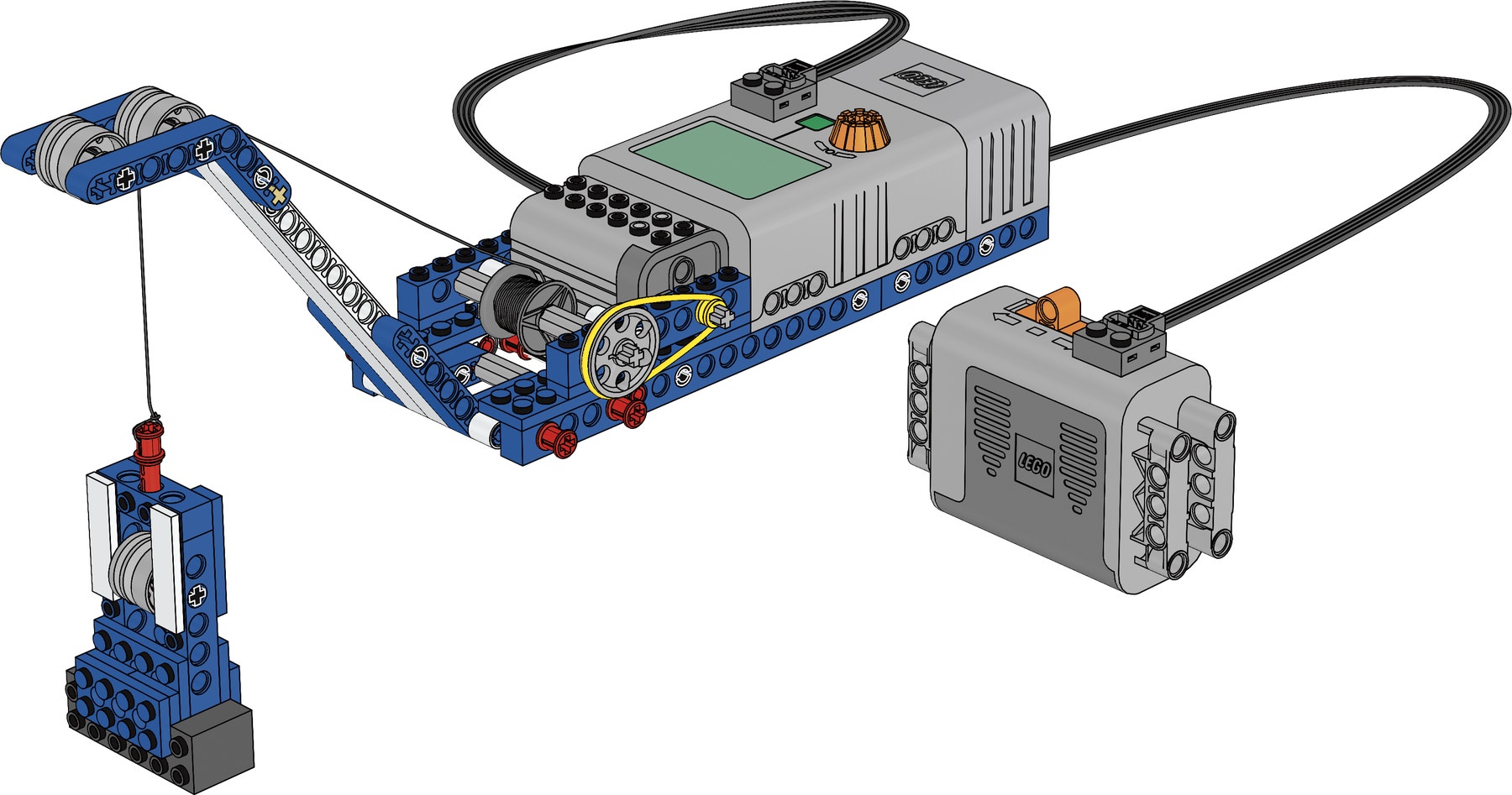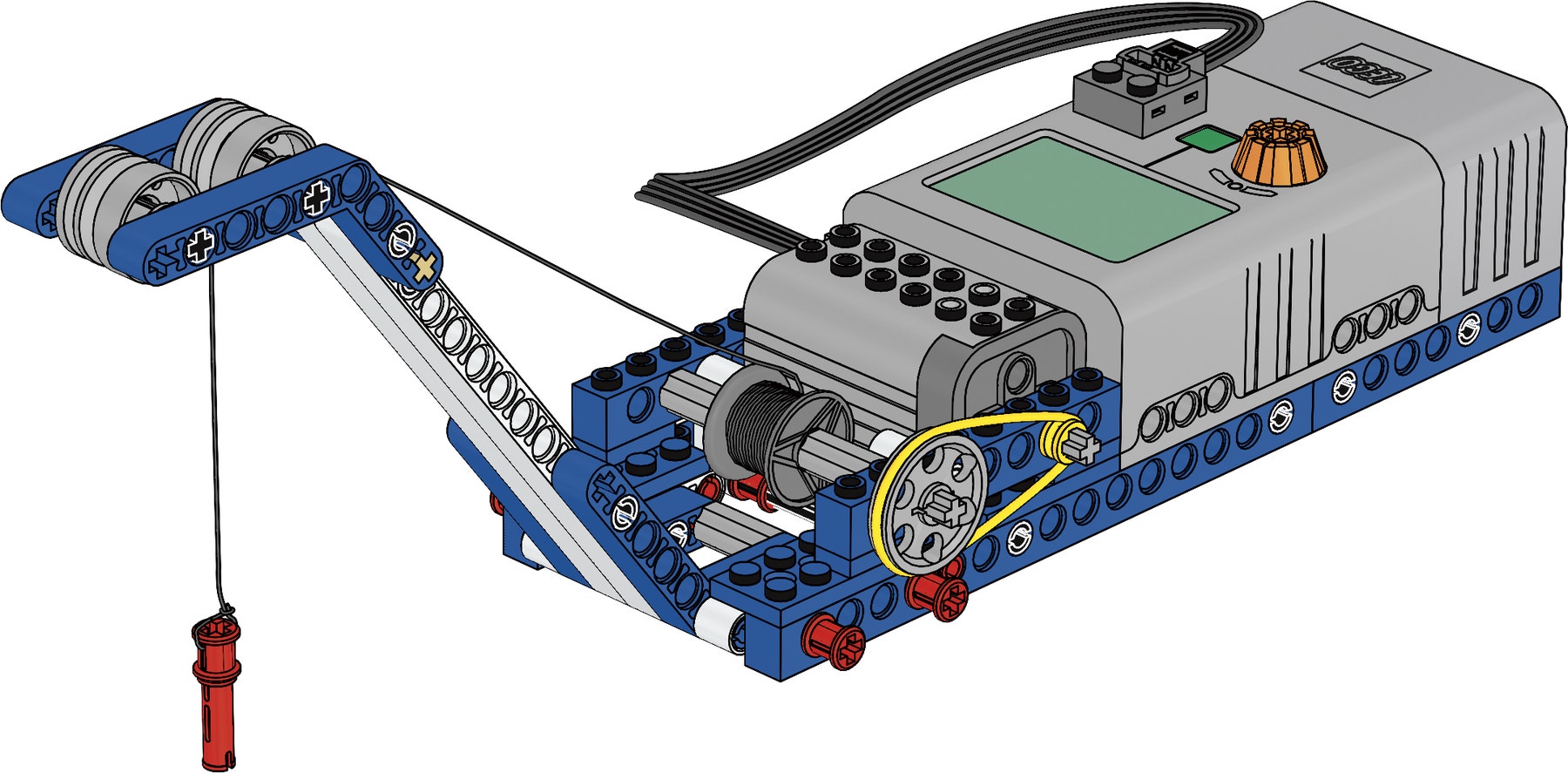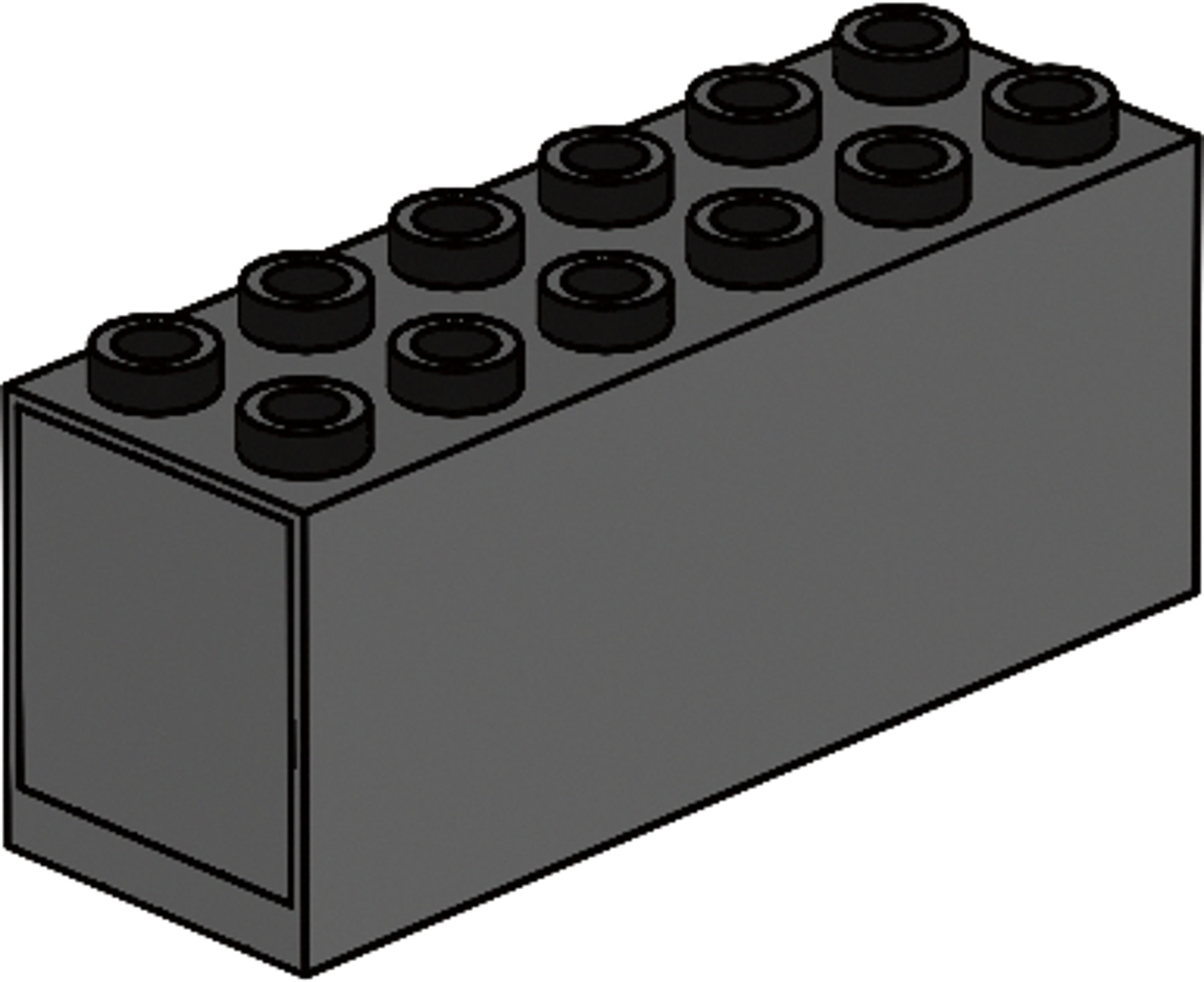Boat Pulley
Explore transfer, transformation, storage and dissipation of energy using a block and tackle pulley system

Connect
(5-10 Minutes)
Boat Pulleys have the ability to hoist and lower heavy loads with ease using the mechanical advantage in the block and tackle. The amount of power needed can be changed by altering the pulley system.
Now build the Boat Pulley and investigate the influence of pulley systems on the power needed to lift the load.

Construct
(20-25 Minutes)
Build the Boat Pulley
(Building Instruction booklet 6A and 6B, to page 63, step 26).
Test the model’s functionality. Loosening bushings can reduce friction. Connect the plugs properly by pressing them firmly together.

Test Setting
Place the Boat Pulley on a table and let the load hang freely over the side with as much string as possible pulled down.

Charge the Boat Pulley with a minimum of 50 joules (J).

Contemplate
(20-25 minutes)
Lifting the load
The task requires students to investigate the influence of pulley systems on the power (W) needed to lift a given load.



First, have the students predict and investigate how much power the Boat Pulley needs to lift with the load removed, as shown. Have them read and record their findings.
Then, have the students predict and investigate how much average power the Boat Pulley needs to lift the load with one fixed pulley. Have them read and record their findings.
Next, rebuild the Boat Pulley with the load and have students follow the same procedure now with two fixed and one movable pulley. (Building Instruction booklet 6A and 6B, to page 64, step 1).
The power the Boat Pulley uses to lift with the load removed, must be subtracted from the two other findings, in order to compare the pulley systems. Findings will vary; students will see that the pulley system with two fixed and one movable pulley needs significantly less power to lift the load. It has an ideal mechanical advantage of three, meaning that the pulley system under ideal conditions should only use a third of the amount of power needed to lift the load. In reality, the influence of variables such as friction will make the actual mechanical advantage much less.
Have students reflect on their investigations by asking questions such as:
• Which factors did you base your predictions on?
• Can you explain your findings?
• Can you identify a pattern or trend in the findings?
An increase in lifting time when using more pulleys is noticeable.
• How did you make sure that your findings were scientifically valid?
Students need to investigate several times to make sure findings are consistent and make no changes to the Boat Pulley which could affect its efficiency, e.g. loosening a point of friction.
Did you know?
The LEGO weight element weighs approximately 53 g.

Continue
(25-30 Minutes)
Investigating efficiency
The task requires students to investigate the Boat Pulley’s percentage of efficiency by calculating the ideal amount of work that needs to be applied and by measuring the actual amount of work that needs to be applied to lift the load over a vertical distance of 60 cm (= 24 in.).

First, have students calculate the ideal amount of work needed by using this formula:
Work (J) = Force (N) x Distance (m)
Then, have students investigate the actual amount of work needed by reading the
consumption of joules (J) on the Energy Meter display. Have them record their findings.
Next, have students calculate the Boat Pulley’s percentage of efficiency by using this formula:
Work Done
Efficiency = Energy used x 100
The load weighs approximately 0.068 kg giving a force of approximately 0.67 N and the ideal amount of work the Boat Pulley needs to apply to lift the load would be:
Work = 0.67 N x 0.6 m
Work = 0.402 J
When investigating how much work the Boat Pulley actually applies it is essential that students get an accurate joule reading. Findings will vary, though most will find the Boat Pulley applies approximately 2 J to lift the load, which equals an efficiency percentage of approximately 20%.
0.402 J
Efficiency = 2 J x 100
Efficiency = 20.1%
This means that approximately 80% of the all the work applied by the Boat Pulley is lost to friction, heat and other variables.
Hint
Calculate the force using this formula: F = m x g
F is the force, m is the mass, measured in kilogram, and g is the proportionality constant, which is 9.8 m/s2. One could also use a Newton meter.
Identifying Variables
Have students identify and write down at least three variables, explaining clearly how these affect the Boat Pulleys efficiency.
Some factors could include the effects of changing the pulley system, pulley wheels and friction.
Teacher Support
Students will explore the concepts of:
Scientific investigation
Conversion and storage of energy
Investigating and evaluating variables
Informal and formal measuring of distance/time/speed/work
Reading, predicting, and interpreting data
9686 Simple & Powered Machines Set (two students per set recommended)
9688 Renewable Energy Add-on Set
Ruler or measuring tape
NGSS
Disciplinary Core Ideas: Physical Science
MS-PS3 Energy
Crosscutting Concepts
Cause and effect: Mechanism and explanation
Scale, proportion, and quantity
Systems and system models
Energy and matter: Flows, cycles, and conservation
Structure and Function
Stability and change
Science and Engineering Practices
Developing and using models
Planning and carrying out investigations
Analyzing and interpreting data
Using mathematics, Informational and Computer Technology, and computational thinking
Constructing explanations and designing solutions
Obtaining, evaluating, and communicating information
Common Core State Standards English Language Arts
7.EE.C / 8.EE.C / SL 6-8.1 / SL 6-8.4 / RST 6-8.3 / RST 6-8.4 / RST 6-8.7 / WHST 6-8.1 / WHST 6-8.2 / WHST 6-8.4
Student Material
Share with:
 Google Classroom
Google Classroom



